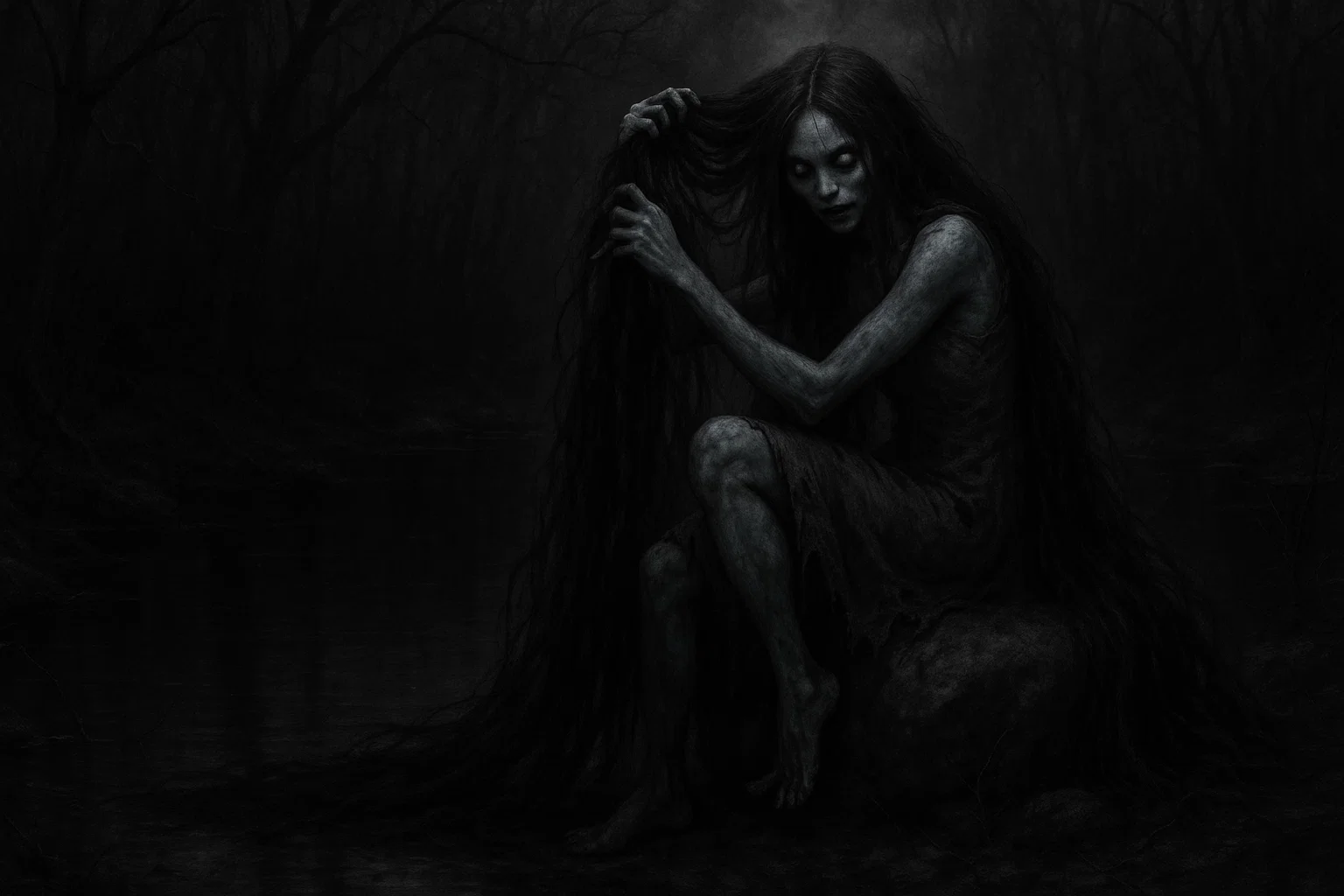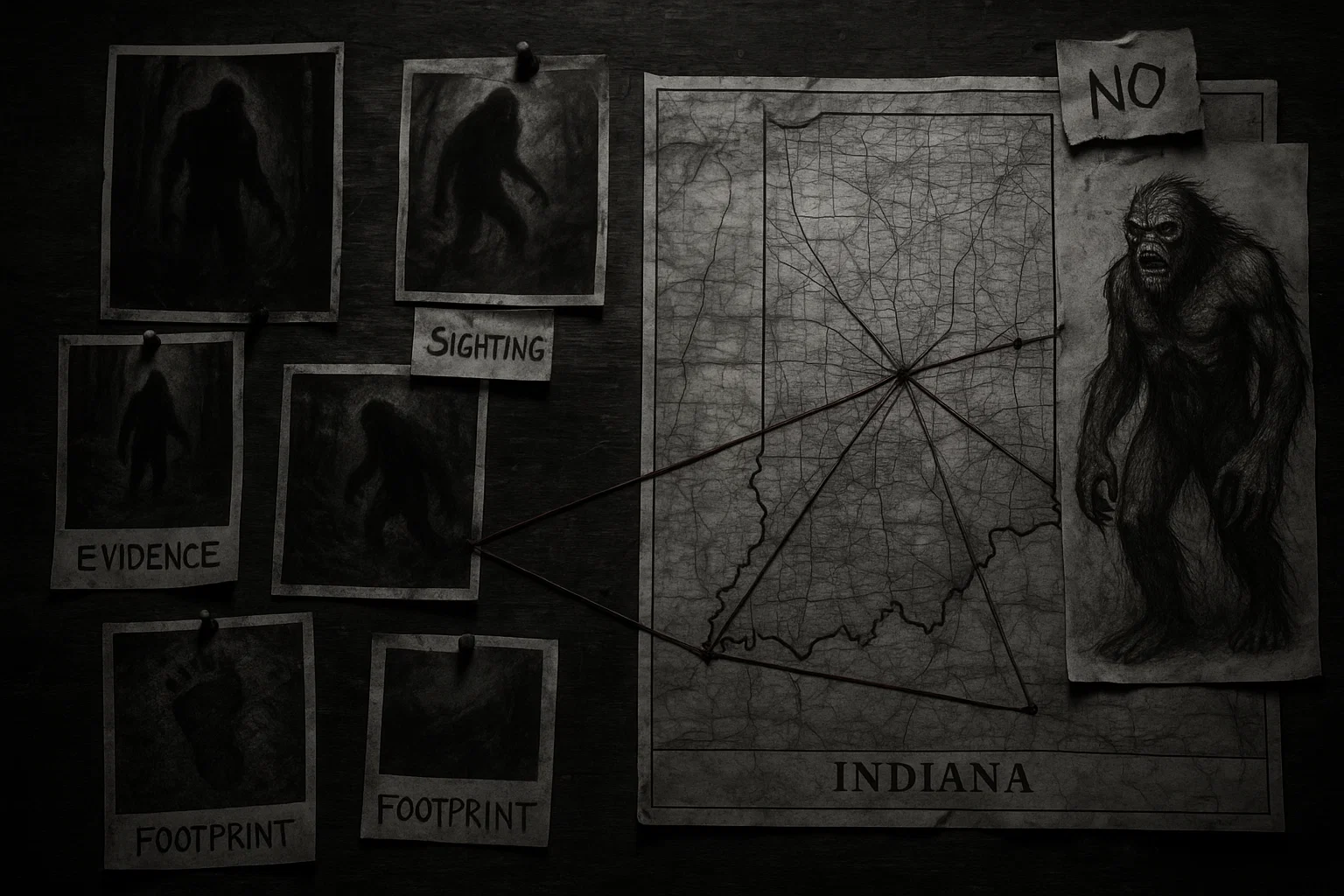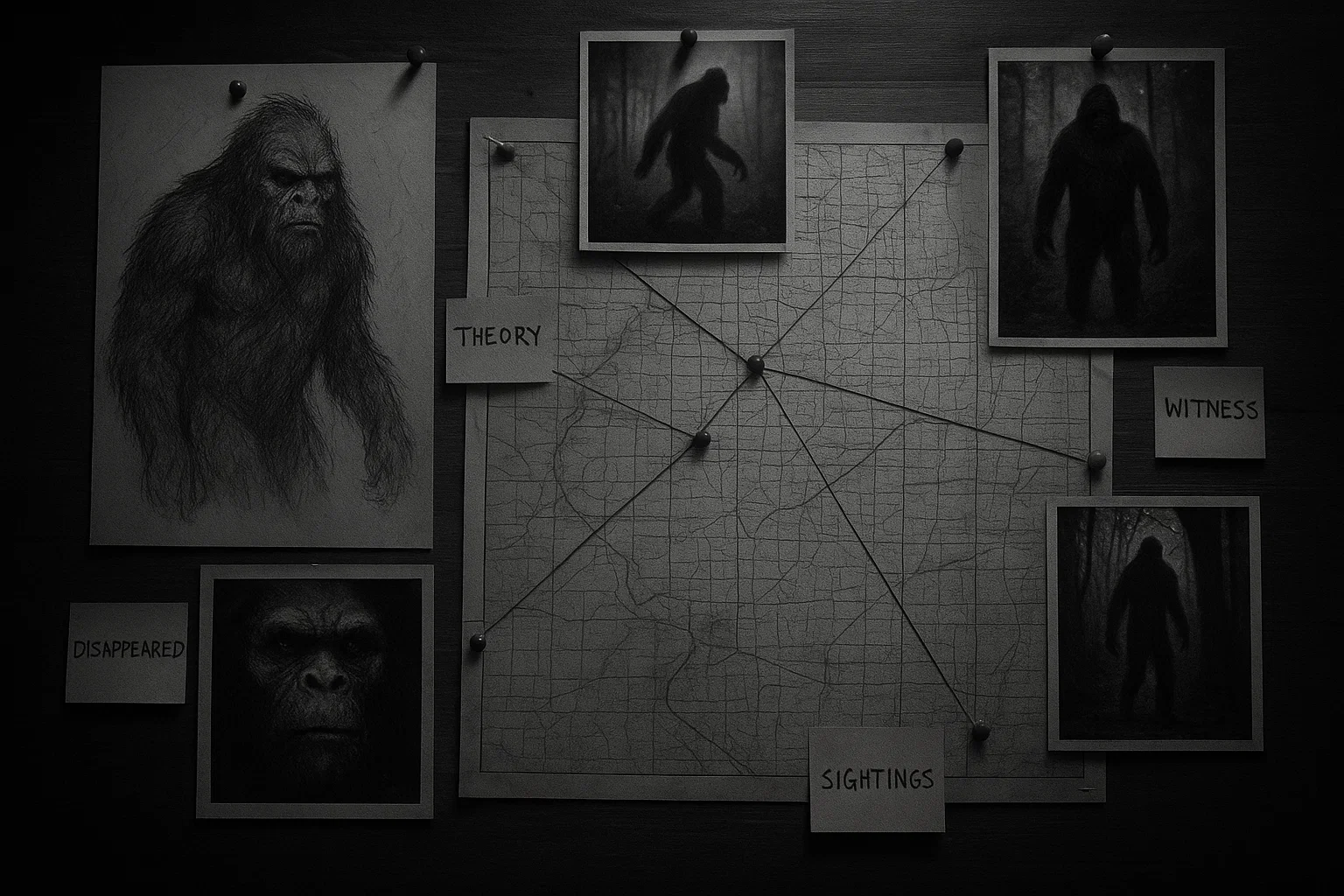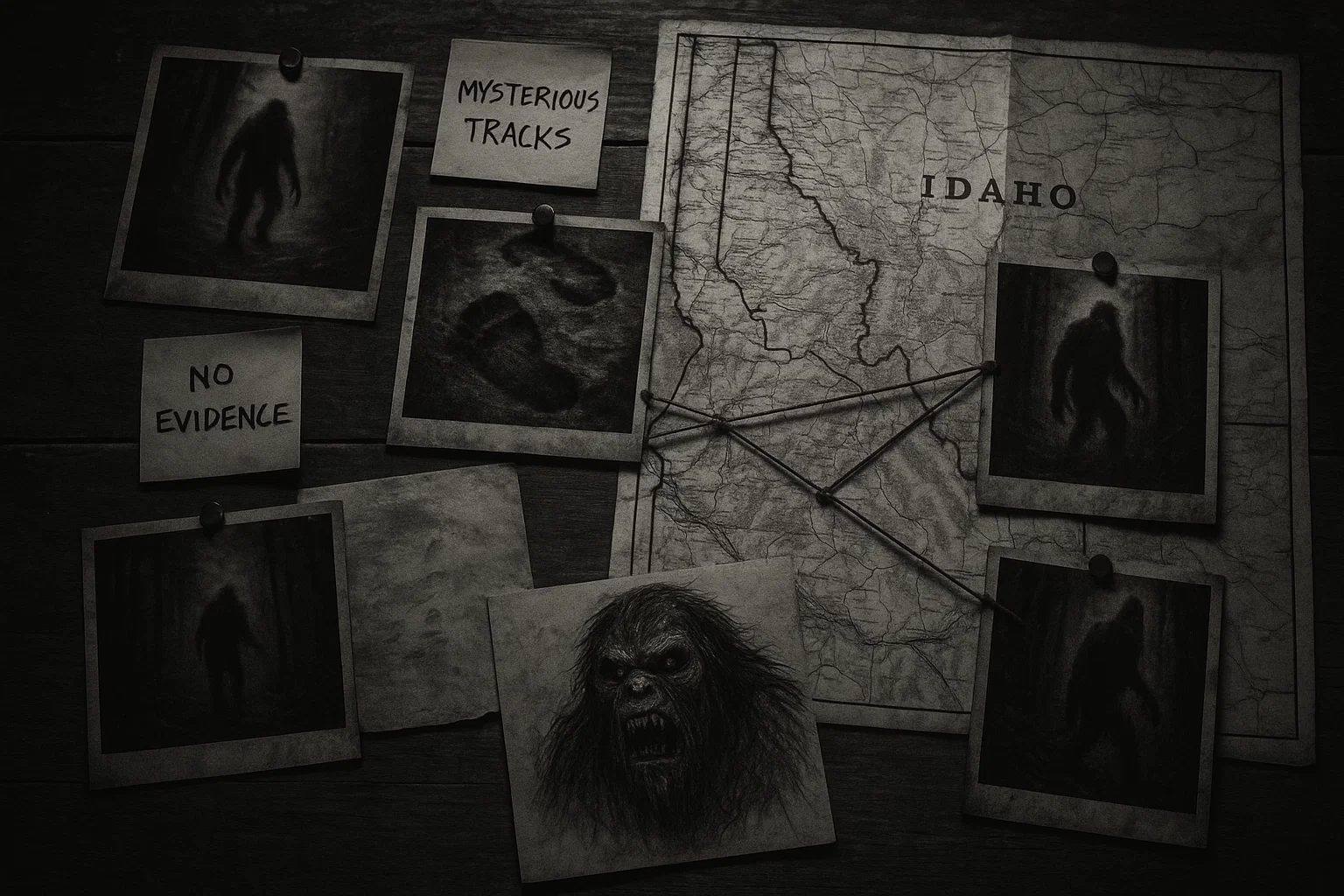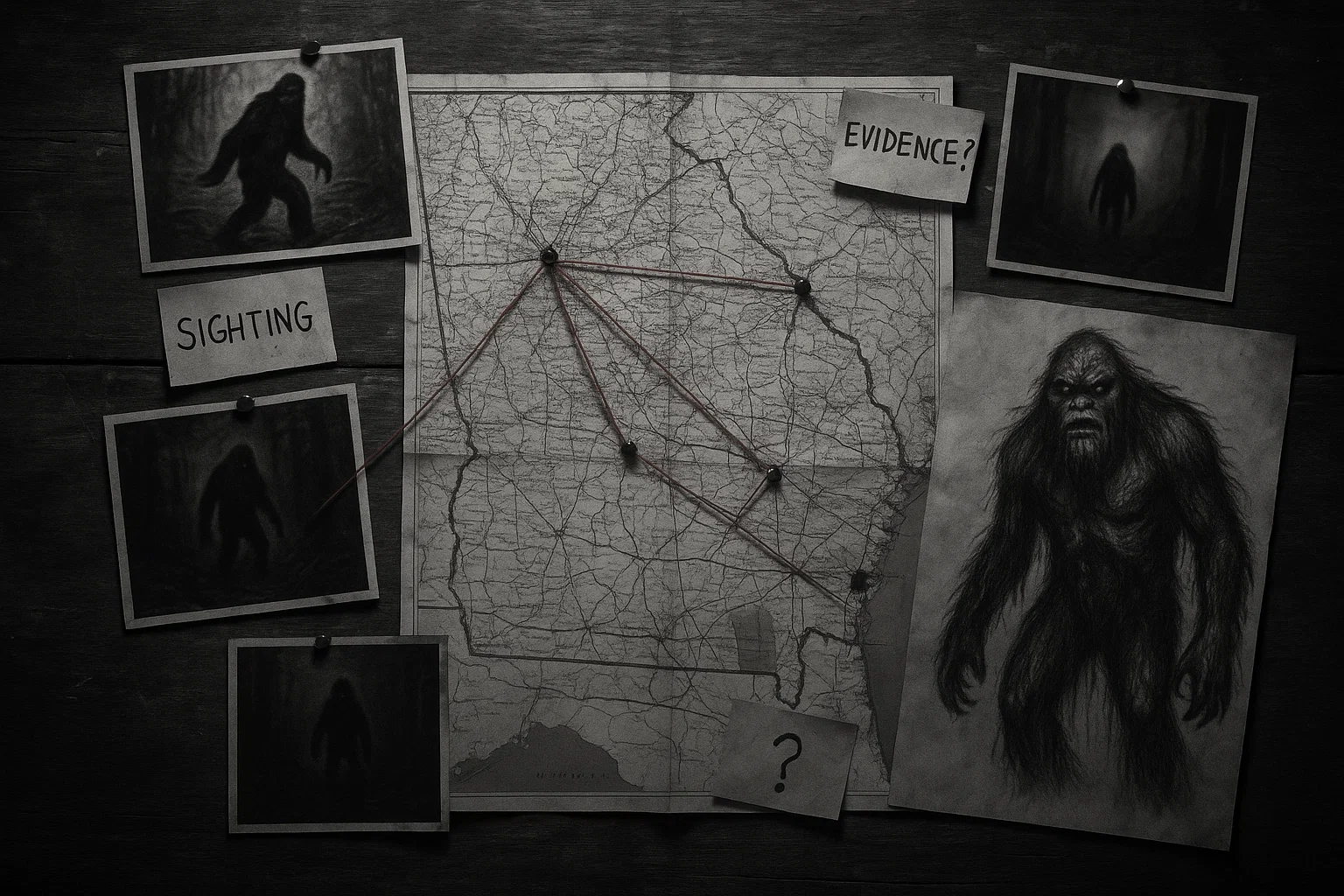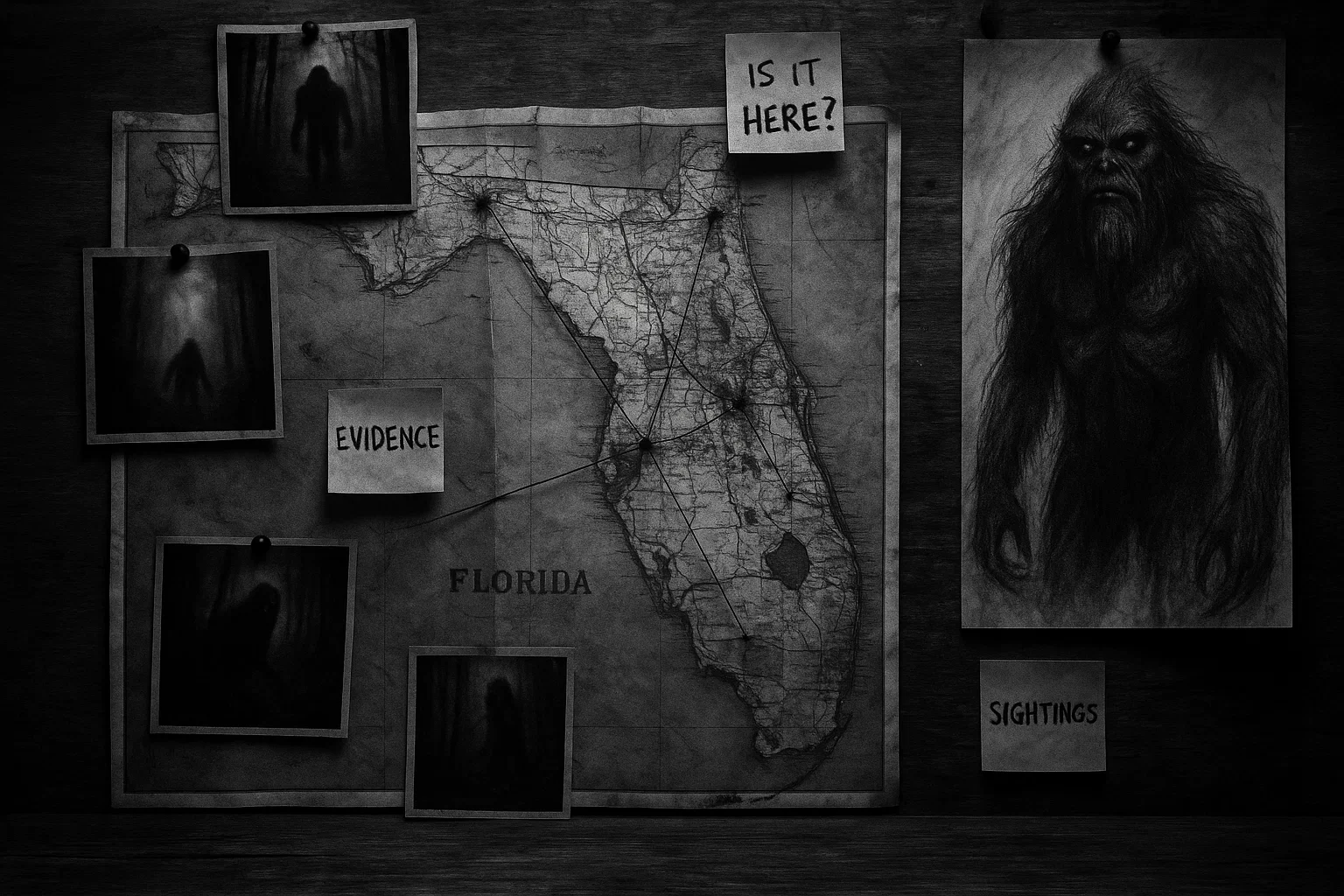Deep in the heart of the Dominican Republic, where mist clings to rugged mountains and shadows dance in dense forests, whispers of a haunting legend echo through the ages.
La Ciguapa, a seductive yet elusive cryptid, is said to roam these wild landscapes under the veil of night, her presence both captivating and chilling. Is she a supernatural temptress luring men to their doom, a guardian spirit of the untamed wilderness, or a cultural myth woven from centuries of storytelling?
This in-depth exploration dives into the origins, appearance, habitat, sightings, scientific perspectives, and global comparisons of La Ciguapa, unraveling the enigma that has enthralled generations.
Table of Contents
What Is La Ciguapa?
La Ciguapa is a pivotal figure in Dominican folklore, embodying the mystique and cultural richness of the Caribbean nation. Described as a female entity with an ethereal beauty, she is said to inhabit the remote wilderness of the Dominican Republic, emerging at night to enchant unsuspecting men, often hunters, farmers, or travelers.
Her allure is irresistible, with legends claiming she uses a hypnotic gaze and melodious voice to draw victims deep into the forests, where they are lost forever—either to death or enchantment.
Her name, possibly derived from the Nahuatl word cihuatl (meaning “woman”) or linked to the indigenous Ciguayo people of Hispaniola, underscores her feminine essence and ties to the island’s pre-Columbian heritage.
The origins of La Ciguapa are steeped in cultural syncretism. Some scholars suggest she may stem from Taino mythology, representing a spirit of the land or a guardian of nature, though no direct Taino records confirm this.
The Taino, the indigenous people of Hispaniola, revered natural spirits called zemis, and La Ciguapa’s connection to forests and caves aligns with their animistic beliefs.
You May Also Like: Bathsheba Sherman True Story: The Conjuring’s Real Witch?
Alternatively, her legend may have emerged during the colonial era, blending European tales of sirens, mermaids, or forest nymphs with African influences brought by enslaved peoples, such as stories of shape-shifting spirits or dangerous seductresses.
The succubus archetype, prevalent in European folklore, and African myths of forest-dwelling entities like the Mami Wata may have contributed to her narrative.
La Ciguapa’s behavior varies across tales, reflecting her multifaceted nature. In some stories, she is a malevolent predator who consumes her victims’ life force through a deadly kiss or lures them to perilous cliffs. In others, she is a reclusive, almost tragic figure, avoiding humans unless provoked, her beauty a curse that isolates her from society.
This duality—seductive yet dangerous, alluring yet elusive—positions her as a symbol of temptation, the untamed wilderness, and the consequences of straying from safety.
Her cultural significance is profound. La Ciguapa appears in Dominican literature, art, and media, cementing her as a national icon. Notable works include Francisco Javier Angulo Guridi’s 1866 story La Ciguapa, which introduced her to a broader audience, and Julia Alvarez’s 2002 children’s book The Secret of the Footprints, which reimagines her for younger readers.
The 2009 film El Mito de la Ciguapa further popularized her tale, blending horror and folklore. She also features in oral traditions, with rural communities sharing cautionary tales to warn against wandering alone at night.
Some interpret her as a feminist symbol, representing resistance against patriarchal control, possibly inspired by runaway women or maroon communities who defied colonial oppression by hiding in the mountains.
What Does La Ciguapa Look Like?
The physical appearance of La Ciguapa is both captivating and unsettling, blending human-like beauty with otherworldly traits that set her apart as a cryptid.
She is typically described as a petite woman, standing no taller than one meter, with a slender frame that enhances her ethereal presence. Her skin is often depicted as dark brown or deep blue, sometimes with a scaly or leathery texture that hints at her supernatural nature.
This coloration may reflect her connection to the Dominican Republic’s tropical environment, where her dark hue could blend with the shadows of dense forests or the rocky surfaces of caves, aiding her elusiveness.
Her most iconic feature is her backward-facing feet, a trait that makes her footprints appear as if she is walking in the opposite direction, confounding trackers and adding to her mystique.
This anomaly is not only a hallmark of her legend but also a practical adaptation for evasion in the rugged terrain of her habitat. Her long, glossy hair, often black or dark brown, cascades down to her ankles, serving as a natural covering for her naked or minimally clothed body. This hair, described as lustrous and flowing, enhances her seductive allure, drawing parallels to mythological figures like sirens or mermaids.
You May Also Like: The Curse of Nam Koo Terrace | Horror Story
La Ciguapa’s eyes are another striking feature—large, black, and almond-shaped, they are said to possess a hypnotic quality that mesmerizes those who meet her gaze.
Some accounts describe her as having sharp teeth or claw-like nails, emphasizing her predatory nature, while others focus on her delicate, almost fragile appearance, underscoring her dual role as both temptress and victim.
Variations in her depiction exist: in Guridi’s 1866 story, she has golden skin and slanted eyes, suggesting an indigenous aesthetic, while modern accounts lean toward a darker, more demonic portrayal.
Her appearance is not entirely out of place in her environment. The dark skin and long hair could camouflage her among the dense vegetation and shadowy cliffs of the Dominican mountains, while her backward feet align with the disorienting, labyrinthine nature of her habitat.
However, the supernatural elements—hypnotic eyes, scaly skin, and backward feet—set her apart from any known species, suggesting a mythological rather than biological origin. These traits may symbolize the Dominican landscape’s beauty and danger, reflecting the tension between human exploration and the untamed wild.
Where Does La Ciguapa Live?
La Ciguapa is said to inhabit the remote, rugged regions of the Dominican Republic, primarily the Cordillera Central and Bahoruco Mountains. These areas, characterized by dense tropical forests, steep cliffs, and deep caves, provide the perfect backdrop for a creature of myth.
The Cordillera Central, the island’s highest mountain range, stretches across central Hispaniola, encompassing peaks like Pico Duarte (3,087 meters).
Its terrain is a mosaic of pine forests, ferns, and cloud forests, teeming with wildlife such as the Hispaniolan solenodon, palmchat birds, and various reptiles. The Bahoruco Mountains, located in the southwest, are equally isolated, with limestone karsts, dry forests, and thick underbrush, home to endemic species like the rhinoceros iguana.
These regions are sparsely populated, with human activity limited to small farming communities, hikers, and eco-tourists. The isolation and inaccessibility of these areas—coupled with their dense vegetation and complex terrain—make them ideal for a creature like La Ciguapa, who is said to be nocturnal and active during full moons.
Legends describe her hiding in caves, tree canopies, or riverbanks during the day, emerging at night to roam her domain. The full moon’s light is believed to enhance her visibility and allure, drawing victims into her trap.
The Cordillera Central and Bahoruco Mountains are not only linked to La Ciguapa but also to other paranormal phenomena and local legends. The Cordillera Central is associated with Taino spiritual sites, where zemis were worshipped, and some locals believe these sacred areas are haunted by spirits or supernatural entities.
You May Also Like: The Girl in the Red Skirt (Hanako-san) | Horror Story
Stories of strange lights, disembodied voices, and ghostly apparitions are common, particularly near caves and rivers. The Bahoruco Mountains, historically a refuge for maroon communities, are steeped in tales of bacá—shape-shifting spirits that protect or curse farmers. These legends suggest a broader cultural belief in the supernatural, possibly amplifying La Ciguapa’s mythos.
Historically, these regions have been shrouded in mystery. During the colonial era, the mountains served as hideouts for runaway slaves and indigenous survivors, whose elusive presence may have inspired tales of otherworldly beings.
The Taino revered caves as portals to the spiritual world, and archaeological sites in the Cordillera Central, such as the Pomier Caves, contain petroglyphs and artifacts that hint at ancient rituals. While no direct evidence links these sites to La Ciguapa, their mystical aura may have contributed to her legend.
Other cryptids, such as the chupacabra (reported in nearby Puerto Rico), are not strongly associated with these areas, but the shared Caribbean context suggests a regional fascination with elusive creatures.
La Ciguapa Sightings
The legend of La Ciguapa thrives on a rich oral tradition, with numerous anecdotal accounts of sightings passed down through generations.
However, documented evidence remains elusive, and no verifiable physical proof—such as photographs, videos, or footprints—has been recorded.
| Date | Location | Witness Details | Description of Encounter |
|---|---|---|---|
| 1866 | Mountains (unspecified, likely Cordillera Central) | Group of soldiers | While on patrol, soldiers reported seeing a creature with backward-facing feet and long, smooth hair. This sighting coincides with the first written mention of La Ciguapa in Francisco Javier Angulo Guridi’s 1866 story, suggesting a historical basis for the legend. |
| Early 1900s | Cordillera Central, near a waterfall | Locals | Locals reported seeing a woman with long hair and backward feet near a waterfall. The encounter included hearing bird-like chirps, and footprints appeared to lead in the opposite direction, causing confusion. |
| 1940s | Bahoruco Mountains, Sierra de Bahoruco National Park | Farmers | Farmers described seeing a woman with glowing eyes on a cliff during a full moon. She vanished when approached, leaving backward tracks. The sighting reinforced La Ciguapa’s nocturnal and elusive reputation. |
| 1980s | San José de Ocoa, near a stream | Male resident | A man reported seeing a petite woman with dark skin, long hair, and dark eyes by a stream at dusk. Her hypnotic gaze compelled him to follow, but she disappeared into the forest, leaving no trace except a sense of unease. |
| 2015 | Mountains (unspecified, likely Cordillera Central) | Group of hikers | Hikers claimed to see a creature with backward-facing feet and long, smooth hair while hiking. The sighting occurred in a remote area, consistent with La Ciguapa’s habitat. |
| 2018 | Fields (unspecified, likely rural Dominican Republic) | Farmer | A farmer reported seeing a creature at night with backward-facing feet and long, smooth hair. He heard partridge-like cries, adding to the eerie nature of the encounter. |
| 2000s | Jarabacoa, Salto de Jimenoa waterfall | Hikers | Hikers reported seeing a shadowy figure with long hair near the waterfall, accompanied by soft whispers and a sense of being watched. The figure vanished when approached, aligning with La Ciguapa’s elusive behavior. |
| Unspecified | Bahoruco Mountains | Travelers | Travelers shared stories of being lured deep into the wilderness by a beautiful woman, only to become lost. These accounts, though undated, are persistent in local folklore. |
| Recent (unspecified) | San José de Ocoa | Residents | Residents reported seeing a woman with long hair and dark eyes near forests and rivers. One account describes a man who saw her by a stream at night, only for her to vanish when he approached, leaving no physical evidence. |
Early 20th Century, Cordillera Central (circa 1910–1920)
Hunters and travelers in the Cordillera Central reported hearing eerie, bird-like chirps or soft moans at night, often near rivers or caves. One account describes a group of hunters spotting a small, dark-skinned figure with long hair moving swiftly through the trees near Constanza.
The figure vanished, leaving only footprints that appeared to lead backward, causing confusion and fear. These sightings were shared among local communities, reinforcing the legend’s grip on the region.
Mid-20th Century, Bahoruco Mountains (circa 1940s)
In the Bahoruco Mountains, farmers reported encounters during full moons, particularly near the Sierra de Bahoruco National Park. One farmer claimed to see a woman with glowing eyes standing on a cliff, her long hair flowing in the wind.
As he approached, she vanished, and he later found tracks leading in the opposite direction. These accounts, often shared at community gatherings, emphasized her nocturnal nature and elusive presence.
Late 20th Century, San José de Ocoa (1980s)
In the rural town of San José de Ocoa, a man recounted seeing a petite woman with dark skin and long hair by a stream at dusk. Her eyes locked onto his, and he felt an overwhelming urge to follow her.
He claimed she disappeared into the forest, leaving no trace except a sense of unease. Similar stories from the area describe fleeting glimpses of a figure accompanied by strange sounds, such as singing or sobbing.
You May Also Like: Barbatos: The Duke of Hell Who Speaks with Beasts
Modern Era, Jarabacoa (2000s)
In Jarabacoa, a popular eco-tourism destination in the Cordillera Central, hikers have reported unexplained phenomena, including soft whispers and the sensation of being watched.
One hiker claimed to see a shadowy figure with long hair near the Salto de Jimenoa waterfall, which vanished when approached. These modern accounts, while less detailed, suggest the legend’s persistence in tourist-heavy areas.
Evidence and Investigations
No physical evidence conclusively supports La Ciguapa’s existence. The backward footprints, a hallmark of her legend, have never been photographed or analyzed, and no credible videos or images exist.
Unlike Bigfoot’s Patterson-Gimlin film, La Ciguapa lacks any visual documentation, relying entirely on oral testimony. Newspaper or magazine articles specifically documenting sightings are rare, though local publications like Listín Diario have occasionally referenced her in cultural pieces about Dominican folklore.
No official investigations by authorities or scientific bodies have been recorded, likely due to the legend’s classification as folklore rather than a phenomenon warranting formal study.
Some researchers, including folklorists, have explored La Ciguapa’s cultural significance.
In the 1980s, Dominican anthropologist Bernardo Vega briefly mentioned her in studies of rural folklore, suggesting she may reflect historical fears of the wilderness or runaway women.
Cryptozoologist Loren Coleman has proposed a speculative link to Neocnus, an extinct ground sloth, though this theory lacks supporting evidence. The absence of formal investigations underscores the challenge of studying a cryptid rooted in oral tradition rather than tangible proof.
The lack of evidence does not diminish La Ciguapa’s cultural impact. Her stories are often shared in rural settings, particularly during storytelling sessions or religious gatherings, where they serve as cautionary tales. Some locals believe she leaves signs, such as disturbed foliage or unusual sounds, but these are too vague to constitute proof.
The legend’s persistence suggests a psychological or cultural need for such narratives, possibly as a way to explain unexplained phenomena in the wilderness.
Scientific Perspective
The scientific community largely views La Ciguapa as a mythological construct rather than a biological entity, citing the absence of physical evidence and the legend’s reliance on oral tradition.
However, several theories attempt to explain her origins and persistence, each grounded in specific aspects of her narrative and the Dominican context.
Cultural Symbolism
Explanation: La Ciguapa may symbolize societal fears, such as the dangers of the unknown wilderness or the consequences of succumbing to temptation. Her seductive nature could reflect anxieties about infidelity or the allure of forbidden desires, while her elusiveness mirrors the unpredictability of nature.
You May Also Like: What’s Huggin’ Molly? Is Alabama’s Ghost Still Chasing Kids?
Why It Fits: The legend’s cautionary tone aligns with tales warning against straying from safety, a common theme in rural societies. Her connection to the forest ties her to Dominican reverence for nature.
Why It Doesn’t: The specific trait of backward feet is too fantastical to be purely symbolic, suggesting a unique cultural origin beyond general archetypes.
Psychological Projection
Explanation: La Ciguapa may embody psychological fears and desires, particularly around gender dynamics and the unknown. Her dual role as seductress and predator mirrors universal myths about dangerous women, such as sirens or succubi, reflecting male anxieties about female power.
Why It Fits: Her hypnotic eyes and alluring voice resonate with psychological themes of enchantment and loss of control, common in folklore globally.
Why It Doesn’t: The consistent description of backward feet across stories suggests a specific cultural motif rather than a universal psychological projection.
Misidentification of Natural Phenomena
Explanation: Sightings could result from misinterpretations of animals, shadows, or distorted human footprints in the rugged terrain of the Dominican mountains. Animals like deer or wild boars could leave tracks mistaken for backward footprints, especially in muddy or rocky areas.
Why It Fits: The dense forests and low visibility at night could lead to misperceptions, with human imagination filling in the gaps.
Why It Doesn’t: The detailed descriptions of a humanoid figure with specific traits (long hair, dark skin, hypnotic eyes) are difficult to attribute to animals or natural phenomena alone.
Cultural Syncretism
Explanation: La Ciguapa’s legend may have emerged from a fusion of Taino, European, and African influences during the colonial era. Her seductive nature echoes European mermaid or siren myths, while her backward feet may draw from African or indigenous motifs of trickster spirits.
Why It Fits: The Dominican Republic’s history of cultural blending supports the idea of a syncretic myth, with Taino reverence for nature and European tales of dangerous women converging.
Why It Doesn’t: The backward feet trait is rare in European folklore, suggesting a unique Dominican or Caribbean origin, possibly linked to Taino or African storytelling traditions.
Historical Basis
Explanation: The legend may stem from historical accounts of runaway women or maroon communities hiding in the mountains during the colonial era. These women, evading capture, could have inspired tales of an elusive, supernatural figure.
Why It Fits: The Bahoruco Mountains were a known refuge for maroons, and stories of their cunning survival align with La Ciguapa’s elusiveness and forest-dwelling nature.
Why It Doesn’t: The supernatural elements, such as hypnotic powers and backward feet, are difficult to reconcile with a purely historical explanation.
Extinct Species Hypothesis
Explanation: Some cryptozoologists speculate that La Ciguapa could be inspired by memories of Neocnus, an extinct ground sloth that inhabited Hispaniola until approximately 4,000–5,000 years ago. Its small size and arboreal habits could have left a cultural imprint.
Why It Fits: The Caribbean’s ecological history includes unique species, and extinct animals often inspire folklore, as seen with other cryptids like Bigfoot.
Why It Doesn’t: Neocnus’s physical traits (broad trunk, long claws) do not closely match La Ciguapa’s humanoid appearance, making this theory speculative.
Environmental Influence
Explanation: The legend may reflect the Dominican Republic’s unique environment, with its dense forests and caves fostering tales of mysterious beings. The disorienting terrain could have inspired the backward feet motif as a metaphor for navigational challenges.
Why It Fits: The Cordillera Central and Bahoruco Mountains are complex landscapes where getting lost is easy, aligning with La Ciguapa’s role as a lure to danger.
Why It Doesn’t: The specific humanoid traits and consistent narrative suggest a cultural rather than purely environmental origin.
You May Also Like: Is El Pombero Real? Inside the Terrifying Folklore Still Feared in Paraguay
Comparison With Other Similar Cryptids
La Ciguapa shares thematic and physical similarities with cryptids and mythological figures worldwide, particularly those tied to seduction, danger, and nature:
| Cryptid | Region | Appearance | Habitat | Behavior | Key Traits |
|---|---|---|---|---|---|
| Churel | South Asia | Beautiful woman, backward feet | Rural areas, forests | Lures men to death | Backward feet, seductive |
| Lamia | Europe | Beautiful woman, serpentine lower body | Caves, ruins | Seduces and kills men | Seductive, dangerous |
| Sihuanaba | Central America | Beautiful woman, horse head from behind | Forests, rivers | Lures men to death | Deceptive appearance |
| Baobhan Sith | Scotland | Beautiful women, hooves | Highlands | Seduce and drain blood | Vampiric, seductive |
| Curupí | South America | Small man, backward feet | Forests | Protects forest | Backward feet, guardian |
| Curupira | Brazil | Small man, backward feet | Amazon rainforest | Mischievous, protects forest | Backward feet, nature guardian |
| Siren | Greece/Rome | Bird-woman or beautiful woman | Sea, cliffs | Lures sailors to death | Seductive voice, aquatic |
| Succubus | Various | Beautiful woman | Various | Seduces men in dreams | Sexual predator |
| Mermaid | Various | Half-woman, half-fish | Oceans, rivers | Lures sailors | Aquatic seductress |
| Mami Wata | Africa | Beautiful woman, sometimes serpentine | Rivers, seas | Seduces and protects | Water spirit, seductive |
| Fey (Dryads) | Europe | Beautiful, nature-bound | Forests | Guardians or tricksters | Nature-connected |
| Yuki-onna | Japan | Pale woman, ethereal | Snowy mountains | Lures men to freeze | Seductive, deadly |
This comparison highlights La Ciguapa’s unique blend of traits—her backward feet align with the Churel and Curupira, her seductive nature mirrors the Siren and Mami Wata, and her forest habitat connects her to Fey and Curupí. Her specific ties to the Dominican Republic’s mountainous terrain and cultural syncretism distinguish her within this global tapestry of folklore.
Is La Ciguapa Real?
The question of La Ciguapa’s reality is as intricate as her legend. Scientifically, no evidence—DNA, photographs, verifiable footprints, or credible videos—supports her existence as a physical creature.
Her sightings, while numerous, are anecdotal, lacking the specificity and documentation needed for empirical validation. The absence of formal investigations or tangible proof classifies her as a mythological figure rather than a biological entity.
Yet, La Ciguapa’s reality transcends the physical. She is a vibrant part of Dominican culture, woven into the nation’s identity through literature, art, and oral traditions.
From Guridi’s 1866 story to modern films and books, she embodies the island’s syncretic heritage, blending Taino reverence for nature, European tales of seduction, and African spiritual motifs. Her role as a cautionary tale—warning against the dangers of the wilderness or the perils of temptation—serves a practical purpose, embedding her in the collective psyche.
Theories suggesting historical or ecological origins, such as runaway women or extinct species like Neocnus, offer intriguing possibilities but lack concrete evidence.
Instead, La Ciguapa’s enduring presence reflects a deeper truth: she represents the human need to explain the unknown, to personify the beauty and danger of the natural world, and to preserve cultural narratives that connect past and present.
Whether she lurks in the shadows of the Cordillera Central or exists solely in the stories told by firelight, La Ciguapa remains a powerful symbol, inviting us to explore the boundaries between myth and reality.

